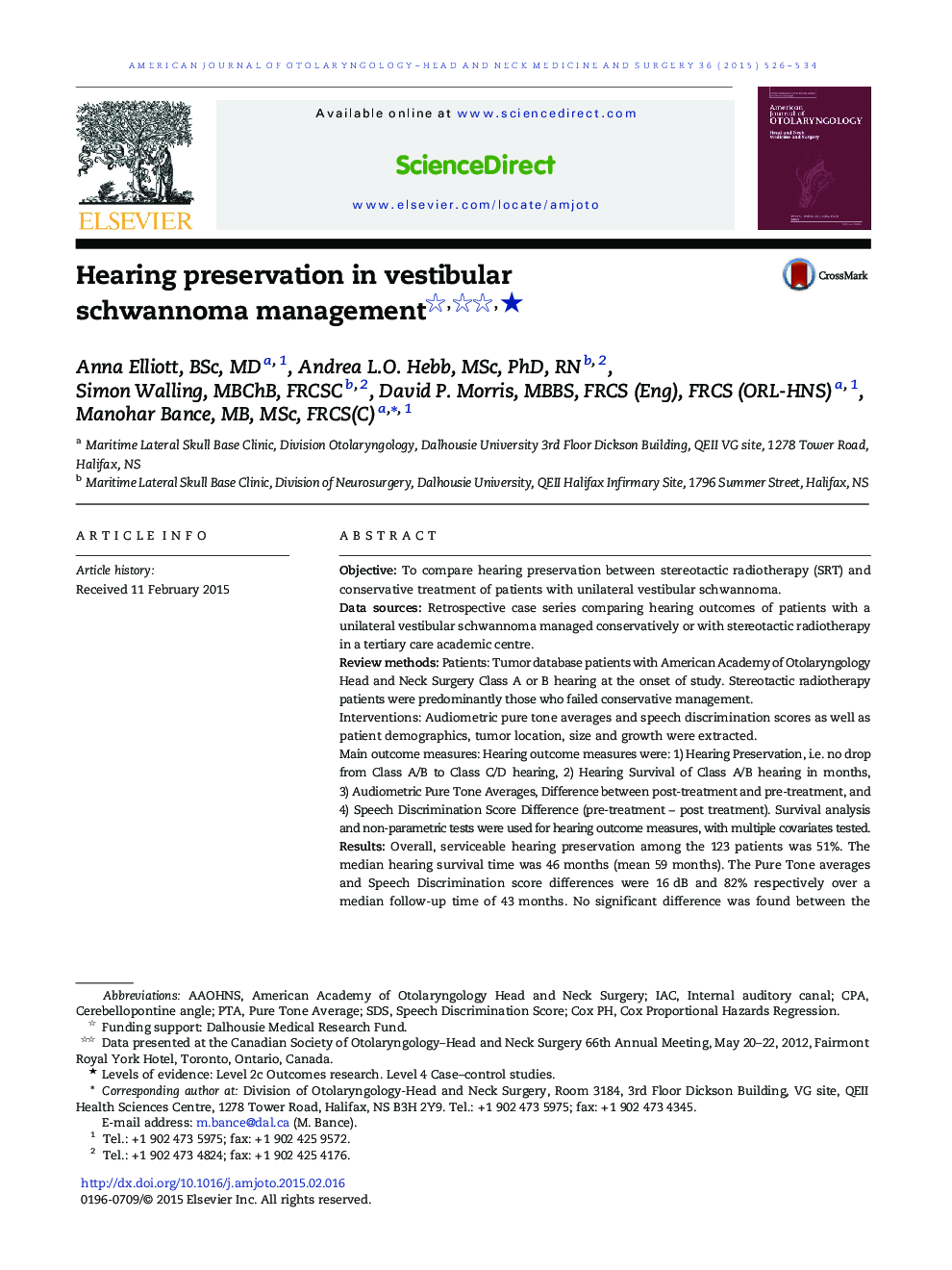| Article ID | Journal | Published Year | Pages | File Type |
|---|---|---|---|---|
| 4102945 | American Journal of Otolaryngology | 2015 | 9 Pages |
ObjectiveTo compare hearing preservation between stereotactic radiotherapy (SRT) and conservative treatment of patients with unilateral vestibular schwannoma.Data sourcesRetrospective case series comparing hearing outcomes of patients with a unilateral vestibular schwannoma managed conservatively or with stereotactic radiotherapy in a tertiary care academic centre.Review methodsPatients: Tumor database patients with American Academy of Otolaryngology Head and Neck Surgery Class A or B hearing at the onset of study. Stereotactic radiotherapy patients were predominantly those who failed conservative management.Interventions: Audiometric pure tone averages and speech discrimination scores as well as patient demographics, tumor location, size and growth were extracted.Main outcome measures: Hearing outcome measures were: 1) Hearing Preservation, i.e. no drop from Class A/B to Class C/D hearing, 2) Hearing Survival of Class A/B hearing in months, 3) Audiometric Pure Tone Averages, Difference between post-treatment and pre-treatment, and 4) Speech Discrimination Score Difference (pre-treatment − post treatment). Survival analysis and non-parametric tests were used for hearing outcome measures, with multiple covariates tested.ResultsOverall, serviceable hearing preservation among the 123 patients was 51%. The median hearing survival time was 46 months (mean 59 months). The Pure Tone averages and Speech Discrimination score differences were 16 dB and 82% respectively over a median follow-up time of 43 months. No significant difference was found between the conservative and SRT groups in any hearing outcome. Class A patients showed far better hearing survival than Class B patients.ConclusionsNo significant difference was demonstrated as to measures of hearing outcomes between stereotactic radiotherapy and conservative management. Excellent existing hearing appears to be the best predictor of long term hearing survival in the cohort studied.
